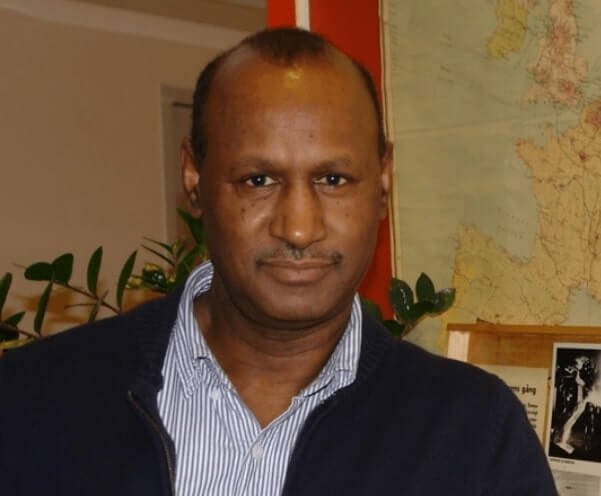Tsegaye Tegenu, PhD
2024-06-20
The design of a long-term national development plan involves various challenges. The first challenge relates to addressing the interdependencies and complexities between macro and sectoral levels economy and stakeholders (government, private sector, and civil society). The second alludes to anticipating the possible potential changes in political and institutional stability that affects the plan. The third challenge is attributed to financial planning to ensure resources and budget for the duration of the plan. The fourth refers to establishing clear metrics and indicators for monitoring progress of the plan. The fifth challenge pertains to the requirements of building institutional capacity and developing skilled human resources to address implementation challenges.
In my presentations I have only discussed the first challenge, namely the technical aspect dealing with the type of studies conducted to identify the nature of the problems to be dressed, vision formation, goal setting, objectives and strategy identifications. I do not have access to performance data, monitoring and evaluation reports to discuss the other four challenges related to the design problems of the Ten Years Development Plan: A Pathway to Prosperity 2021-2030.
I hope notable practitioners from the Ministry of Planning and Development, urban and regional planners, project managers and coordinators, and independent consultants can share with us their practical insights into the challenges of these four design problems of the Ten Years Development Plan. Even if we take into consideration the first challenge, we know that policy making without clear goals and strategies would resemble a ship sailing without a compass or map. In other words, even with my own assessment, I can see that the Ten Years Development Plan lacks direction, coherence, and purpose.
Concerning the other four challenges, we can infer conclusions by looking at the existing situation of the country. I think we all have a good understanding of the current political situation of the country, the level of stakeholder engagement, institutional capacity of the implementing agencies, and the geopolitical changes. Taking these key points into consideration, it is not difficult to judge the state of the plan’s effectiveness and implementation.
In short, the Ten Years Development Plan has design problems of different kinds affecting political leaders and policy makers. Lacking a sense of direction and purpose means politicians and policy makers make decisions on ad hoc basis, without a clear understanding of the desired outcomes. Policy making is also fragmented, with different actors pursuing divergent objectives and priorities. Without clear goals to prioritize actions, resources are also allocated based on short-term considerations, political expediency, or vested interests rather than strategic priorities. In the absence of clear goals and strategies, it is challenging to hold policymakers accountable for their decisions and actions. Inconsistent and ineffective policies lead to political instability, as the failure to achieve development goals can be perceived as a failure of leadership.
The design problems of long-term national development plans affect not only the political leaders and policy makers but also the general population. Inefficient and poorly designed plans fail to address the actual needs of the population, leading to persistent poverty, inequality, and lack of access to essential services. Misallocation of resources leads to economic instability, job losses, and a lower standard of living. Unfulfilled promises and visible disparities lead to social unrest and discontent among the population.
Design problems have broader implications related to increased social and economic inequalities, loss of trust, economic stagnation due to misallocation of investments (see showcase projects), political instability and conflict escalation.
It is beyond the scope of this short article to discuss the empirical data of design problems of the Ten Years Development Plan that leads to a range of adverse outcomes, including misuse of resources, political instability, and social unrest in the country. The absence of a properly designed long-term plan can create a chaotic environment where both ordinary citizens and government leaders are overwhelmed by immediate problems and crises.
Without a properly designed long-term national development plan, a country risks falling into a metaphorical wilderness characterized by lack of direction, economic instability, social fragmentation, political instability, and environmental degradation. This wilderness not only affects ordinary people but also leaders, making it difficult to navigate towards sustainable development and prosperity.
There are several examples of countries that have faced significant challenges due to the lack of properly designed long-term planning. In Venezuela, mismanagement of resources and lack of a coherent economic strategy have led to hyperinflation, severe shortages of basic goods, and a humanitarian crisis. In Syria, lack of inclusive development and political reform contributed to social unrest, which escalated into a devastating civil war. In Zimbabwe, inconsistent and ad hoc economic policies have led to political and economic instability, with widespread poverty and social discontent.
Due to a lack of long-term planning, Haiti has faced persistent economic challenges, political instability, and social issues, compounded by natural disasters like the 2010 earthquake and frequent hurricanes. Somalia has experienced decades of conflict, instability, and lack of effective governance since the collapse of its central government in 1991. Myanmar has faced decades of military rule, ethnic conflict, and economic isolation, with recent transitions towards democracy and market economy being turbulent. Democratic Republic of the Congo (DRC) has vast natural resources but has been plagued by decades of conflict, corruption, and political instability.
These case studies illustrate the severe consequences that can arise from the absence of properly designed long-term national development planning. Economic instability, social unrest, political fragmentation, and environmental degradation are common themes. It is clear that addressing the design problems of long-term national development plans is crucial for achieving sustainable development outcomes. This not only benefits ordinary people by meeting their needs and improving their quality of life but also helps leaders and governors maintain direction, accountability, and credibility, ultimately fostering social and economic stability and progress.
The question is how to navigate out of the wilderness and bring Ethiopia into the ranks of the middle-class status countries of the East Asian Tigers (South Korea, Taiwan, Hong Kong, Singapore). Stay tuned for my suggestions.
















I just read about a tragic story that took place in Tigray region. The story was about a 16 year old girl who was kidnapped by armed thugs for ransom. The thugs demanded a payment of 3 million in the local currency in exchange for her release. When the parents was not able to come up with the ransom money, the demonic thugs raped and killed her. Some of the thugs were caught and had led the police to where they buried her.
You think this is a rare occasion now? Wait until those armed young men who are now roaming the wilderness of Amhara and Oromia regions start returning home. Both of them have proven to be ruthless to their victims. If something is not awaiting them in a well thought out economic development plan that switch them to a productive and sustainable means to make a satisfactory living, that country will be El Salvador on steroid. Colombian, Chinese(faceless commies from Beijing) and African drug cartels will have a ready-to-slice hapless youth in its millions. You think Rio De Janeiro and Johannesburg are the most dangerous cities now but Addis/Finfinne, Mekele, Dire Dawa, Jimma and other cities will outdo them overnight. Rapes, kidnappings, random shootings, robberies, mugging and inter gang warfare between armed thugs will be so common that we will all say ‘So what? It is just another kidnapping, rape or murder!’ My dear Ethiopia! You gem of the colored, Ethiopia! You are duly forewarned!!!
It was very recently reported that the autonomous region Puntland has ordered those aliens who live in the country illegally to leave. My understanding of this order is that it does not include those who live there legally. The fact is since the signing of the MOU between Somaliland and Ethiopia, those autonomous regions in Somalia have been singing ‘Pass The Dutchie!’
Pass the Dutchie ‘pon the left hand side
Pass the Dutchie ‘pon the left hand side
Pass the Dutchie ‘pon the left hand side
Pass the Dutchie ‘pon the left hand side
It a go bun (give me the music, make me jump and prance)
It a go dung, ya know? (Give me the music, make me rockin’ at the dance)
So I stopped to find out what was going on
(How does it feel when you’ve got no food?)
‘Cause the spirit of MOU, you know he leads you on
(How does it feel when you’ve got no food?)
There was a ring of dreads and a session was there in swing
(How does it feel when you’ve got no food?)
You could feel the chills as I seen and heard them say
(How does it feel when you’ve got no food?)
Pass the Dutchie ‘pon the left hand side (I say)
Pass the Dutchie ‘pon the left hand side
It a go bun (give me the music, make me jump and prance)
It a go dung, ya know? (Give me the music, make me rockin’ at the dance)
Pass the Dutchie ‘pon the left hand side (I say)
Pass the Dutchie ‘pon the left hand side
It a go bun (give me the music, make me jump and prance)
It a go dung, ya know? (Give me the music, make me rockin’ at the dance)
On the left hand side (I say)
On the left hand side (I say)
On the left hand side (idiot)
On the left hand side (feel it)
On the left hand side
And I say east, say west, say north and south
This is gonna really make us jump and shout
And I say east, say west, say north and south
This is gonna really make us jump and shout
I say
Okay bigots! Don’t jump on me for posting this. I’m just repeating what Puntland, Galmudug and Jubaland has been singing lately.